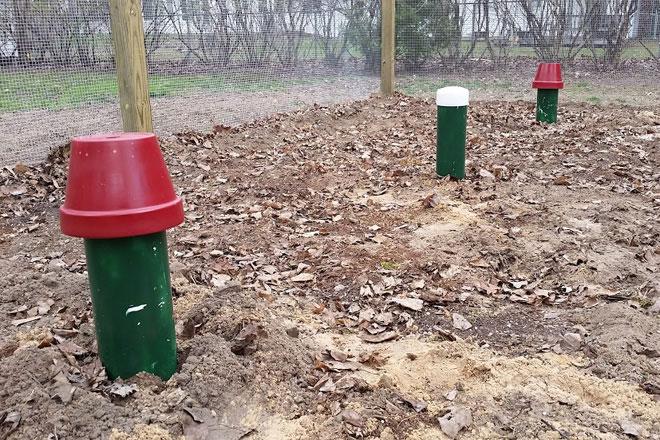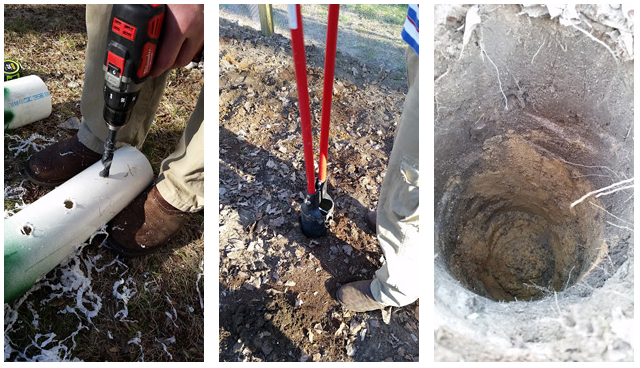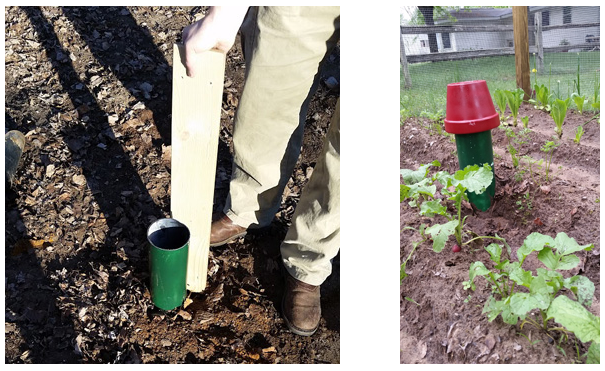DIY worm tower: Great for your garden and the environment
What is the best way to dispose of bills and junk mail? Recycle! Mother nature has the most efficient recycling program around, and it involves worms. Yes, those creepy crawly creatures that are everywhere after rainfall. If you have misconceptions that worm composting is time-consuming, smelly and hard to do, let’s show you otherwise.
My favorite aspect is that it can be done virtually anywhere! Urban setting? No problem. How about during the dead of winter? It’s easily portable to an inside location. Can worms live in a garden? Yes! This specific worm composting is achieved through a worm tower, a project that is easily completed in a day and with little effort.
Not only is worm composting tower easy to make but it can be done fairly cheap. I was able to find all of the necessary materials for a fraction of the price at the Midland County Habitat for Humanity ReStore in Midland, Michigan. If you are not fortunate enough to have a Habitat ReStore near you, the materials are still fairly inexpensive at any local hardware store.

How a worm tower works
The concept of a worm tower, very similar to a worm bin, is that it is partially buried into the soil of the garden. Compostable waste can be dropped into the tower where worms enter through the holes and can consume it. The worms then exit the tower to scatter castings around your garden and also aerate the soil when they burrow around. Plants love this worm fertilizer and will grow larger and healthier with it.
What “waste” is ideal for the worm tower?
- Yard waste such as grass clippings, old dried leaves and peat moss.
- Food waste: Avoid anything overly citrus. My worms, affectionately named “wormies,” enjoy apples, minus the seeds, banana and/or just the peel, lettuce, carrot skins and tops, and almost any vegetables.
- Paper waste: Slightly damp corrugated card board, paper towel or toilet paper rolls, paper bags, and black and white paper such as junk mail.
Materials needed for a worm tower
- PVC pipe
- PVC pipe cover or terracotta pot, preferably without holes
- Drill with larger sized drill bit
- Worms – Specifically, red wiggler worms*
*People raise worms for composting, so if you’re having trouble locating worms in your area, you can buy them from a worm farm. There are many worm farms that sell online, and you can even buy worms through other well-known online retailers and resellers. I want to reiterate that composting worms are not the typical earthworm. These are smaller red worms, hence the nickname “red wiggler.” In fact, do not mix earthworms with red wigglers! The red wigglers will eat the earthworms.
Optional materials
- Sandpaper
- Paint
How to make a worm tower
- First, cut the PVC to the length that you want. Remember worms are happier near the ground surface so the pipes do not have to be super long.
- On each pipe, drill holes along one end. The drilled end will be buried into the ground.
- Before you install the worm towers, feel free to paint the PVC to add a touch of color to your garden. I painted mine green so that it would blend into my garden. Don’t forget to decorate the cover or terracotta you plan to use as a lid.
- Dig your ground deep enough to cover all of the predrilled holes on your pipe, but don’t dig too deep! We dug the holes about a foot deep. Worms are surface creatures, so burying the PVC pipes deep is not optimal.

- Place a tower into the hole. Have a friend stabilize the pipe while you refill the surrounding area with soil. This will help keep your pipe straight.
- Once the towers are buried, add a layer of old leaves then food scraps down into the tube and make sure to cover food with shredded paper, grass clippings, dried leaves or soil. The top layer is crucial to prevent the odor of rotting food.
- Add your red wiggler worms into their new home.
- Lastly, add your beautifully decorated pots to the top of your worm tower. These lids will protect the worms from the outside elements, bugs and predators. Clay/terracotta pots are best suited because they are heavy enough to withstand a strong wind. I tried using plastic pots at first. Silly me! I never knew which neighbor was the lucky recipient of those pots!

Worm towers can be one of the most rewarding additions to a garden. It’s beneficial to the environment and the plants love the castings that are produced. It’s low maintenance. It’s as simple as eating a banana, throwing the peel into the tower and forgetting about it! It’s amazing that worm towers are not utilized more often. Start a movement, and start a worm compost bin or tower today.
Lyn has recently exchanged an Air Force uniform for skinny jeans and ballet slippers. She stays busy with three kiddos, mops and volunteer work. Check out her blog MidMichiganMom for tips on repurposing thrift store finds, crafts and mommy life. Also look for her on Facebook, Twitter, Instagram or Pinterest.